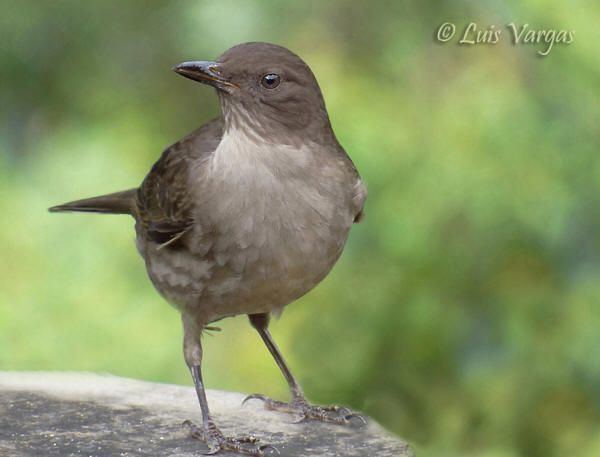Order Passeriformes Genus Turdus | Phylum Chordata Family Turdidae Scientific name Turdus plebejus Rank Species | |
 | ||
Similar Sooty thrush, Thrush, Bird, Rufous‑collared thrush, Comoros thrush | ||
The mountain thrush (Turdus plebejus) is a large thrush which is found in Central America. It was formerly known as the mountain robin. Some authorities refer to it as the American mountain thrush to differentiate it from the Abyssinian thrush (Turdus abyssinicus), known in their taxonomy as the African mountain thrush.
Contents
Description
The mountain thrush resembles other Turdus thrushes in general appearance and habits. It is 23–26 cm (9.1–10.2 in) long and weighs 86 g (3.0 oz) on average. The adult is uniformly dull olive-brown with faint white streaks on the throat. The bill is black and the legs are dark brown. The juvenile resembles the adult, but has buff or orange streaks on the head and upperparts, and dark spotting on the underparts. Two superficially similar relatives share this species range: the sooty thrush is blacker with an orange bill, eye ring and legs, and the clay-colored thrush is much paler and yellow-billed.
There are three poorly defined subspecies:
Distribution and habitat
This is a bird of tall mountain forests and adjacent more open areas and woodland edge which breeds in highlands from southern Mexico to western Panama. Its preference is for oak with many epiphytes and mosses, normally from 1,800 m (5,900 ft) altitude to the timberline. It descends in flocks as low as 900 m (3,000 ft) in the wet season.
Behaviour
The mountain thrush behaves like other thrushes. It forages on large branches or on the ground, in flocks when not breeding, progressing in hops and dashes with frequent stops. It turns leaf litter seeking small fruits, insects and spiders.
Breeding
It builds a grass or rootlet-lined large cup nest, concealed amongst epiphytes, 3–12 m (9.8–39.4 ft) above the ground on a tree branch. The female lays 2–3 unmarked greenish-blue eggs between March and June. The breeding season song is an unthrushlike mechanical monotone chip chip cher chip chip cher cher, and the call is a high seee or whip.
